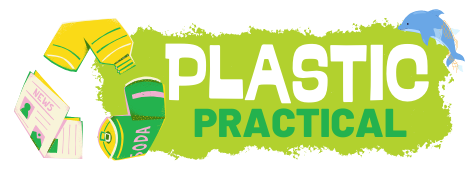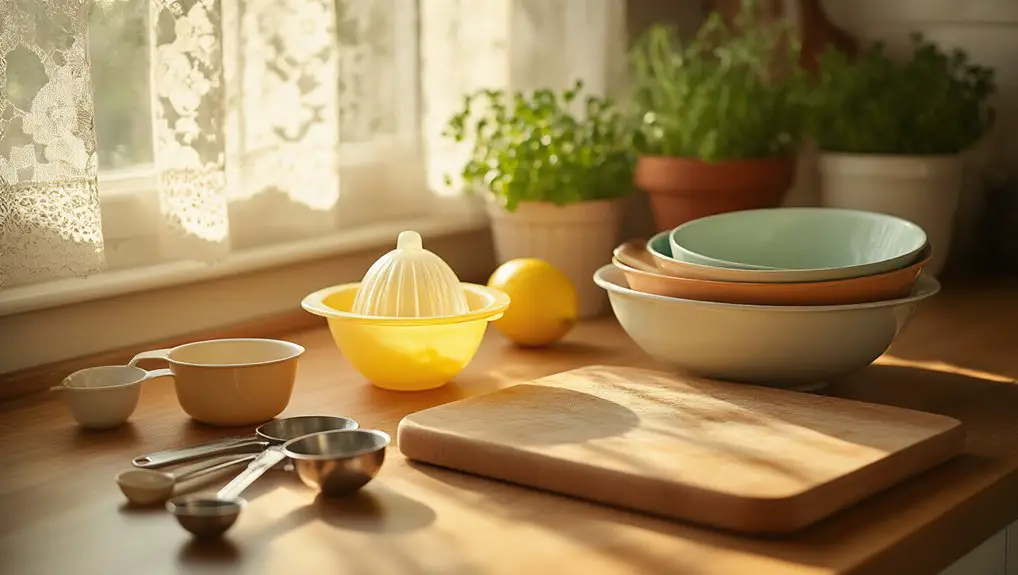I keep my aunt’s taped-up immersion blender and worn egg separator because they’re comfort and family history, but I also want to be safe. Scratched plastics can harbor bacteria and some leach chemicals with heat, so I avoid microwaving or reheating in them and replace deeply scarred boards or cups. I prioritize swaps to glass or stainless and repurpose beloved pieces for non-food uses, balancing memory with evidence-based safety. If you want, I can outline affordable, practical next steps.
Key Takeaways
- Balance sentimental value with safety by keeping cherished gadgets for display or non-food use when they show wear or damage.
- Prioritize replacing plastics used for heating or cutting with glass, stainless steel, or bamboo to reduce chemical and bacterial risks.
- Inspect plastic items regularly: deep scratches, warping, or staining signal it’s time to retire them from food contact.
- When replacing, choose BPA-/phthalate-free, heat-safe plastics and durable alternatives to preserve rituals affordably.
- Repurpose beloved but unsafe items (planters, utensil holders, decor) and recycle responsibly to honor memories without exposure.
When I walk into my aunt’s kitchen, her gadgets tell a story of practicality and personality: a thrift-store immersion blender with a taped handle, a smart plug she’s still figuring out, and a vintage egg separator she swears by. I notice, too, the plastics—mixing bowls with faint scratches, a set of brightly colored measuring cups, a worn cutting board propped against the backsplash. They’re ordinary objects, but they carry weight: memories of family dinners, thrift-hunt triumphs, and small debates about what’s safe to use and what to replace.
Her kitchen’s gadgets—patched, thrifted, cherished—tell stories of comfort, memory, and quiet decisions about safety.
I want to help you think about kitchen plastics not as mere disposables but as items with emotional and health implications that deserve clear, evidence-based choices. I don’t judge my aunt for holding onto things. Research shows people keep items for emotional reasons—comfort, identity, economy—and those reasons matter.
Still, plastics age: scratches can harbor bacteria, heat can leach chemicals, and certain types of plastic aren’t meant for long-term food contact. I tell her, gently, that replacing a deeply scratched container or avoiding plastic in microwave use isn’t about wastefulness; it’s about reducing risk in ways that respect her attachment to cookware. Pointing to studies on plasticizers like phthalates and bisphenol A, I explain that limiting exposure—especially with fatty foods and heat—can be a practical step without demanding a complete overhaul.
We talk about simple swaps. I suggest glass or stainless-steel containers for reheating and long-term storage, not as a moral stance but because they’re inert and durable. I recommend replacing plastic cutting boards when deep grooves appear—those grooves trap bacteria despite careful washing. For measuring cups and spoons, I advise choosing materials that won’t discolor or warp with hot mixtures. These are small, evidence-backed changes that preserve ritual while improving safety.
I also acknowledge cost and accessibility. Not everyone can afford a full kitchen refit, so I prioritize changes: avoid heating food in plastic, hand-wash stained or delicate items, and recycle plastics correctly when you do replace them. Emotional value counts, so I propose repurposing beloved items for non-food uses—holding pens or sewing supplies—so memories stay without risking health.
In the end, my aunt keeps some plastics and retires others. She’s comforted that we can honor her kitchen’s history while using practical science to guide safer choices. The goal is simple: keep what matters, change what helps, and make decisions that respect both feeling and evidence.
Frequently Asked Questions
Are Any Plastics Microwave-Safe Long-Term?
Yes — some plastics are microwave-safe long-term if they’re high-quality, labeled microwave-safe, BPA-free, and kept in good condition; I recommend replacing scratched or warped items and using glass or ceramic when possible to minimize chemical exposure.
How to Identify Bpa-Free Items at Yard Sales?
Look for recycling codes 1, 2, 4, 5 or explicit “BPA-free” labels; I’ll toss anything marked 3 (polycarbonate) or unmarked. I’ll inspect wear, ask the seller, and choose items with clear, intact markings.
Can Plastic Utensils Affect Baby Feeding Safety?
Yes — plastic utensils can affect baby feeding safety. I check for BPA- and phthalate-free labels, avoid scratched or softened items, prefer food-grade silicone or stainless, and replace damaged utensils to lower chemical and choking risks.
What’s the Safest Way to Dispose of Stained Containers?
Stained, smelly, sadly spent: I’d first clean and check for cracks, then recycle if plastic is accepted and safe; otherwise I’ll wrap and trash it, noting landfill rules and choosing replacements made from glass or stainless.
Are “Dishwasher-Safe” Plastics Still Harmful Over Time?
They can be over time; I’ve seen studies showing heat and repeated cycles can leach chemicals, so I avoid frequent dishwasher use for older or scratched plastics, preferring glass or marked BPA-free replacements for safety.

